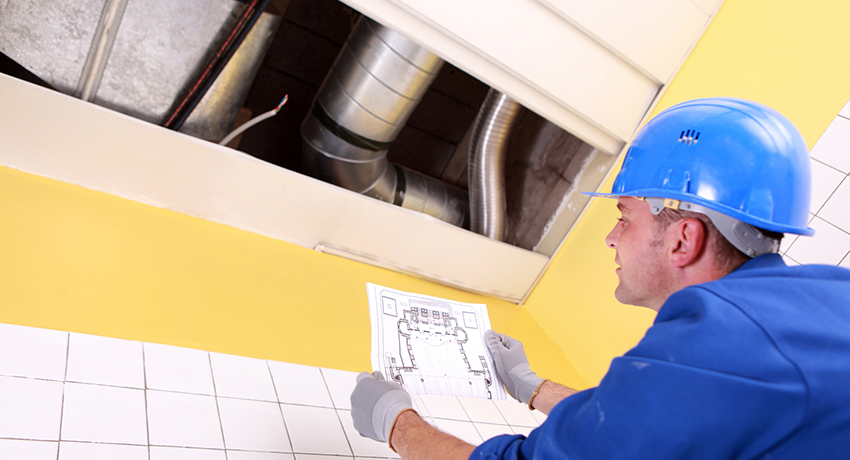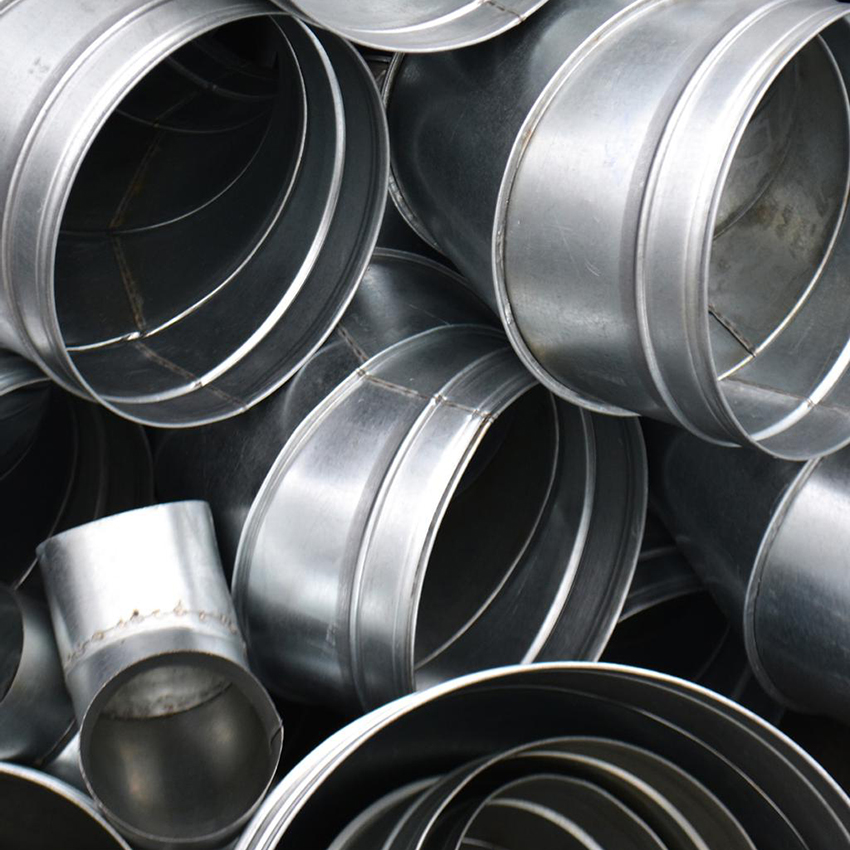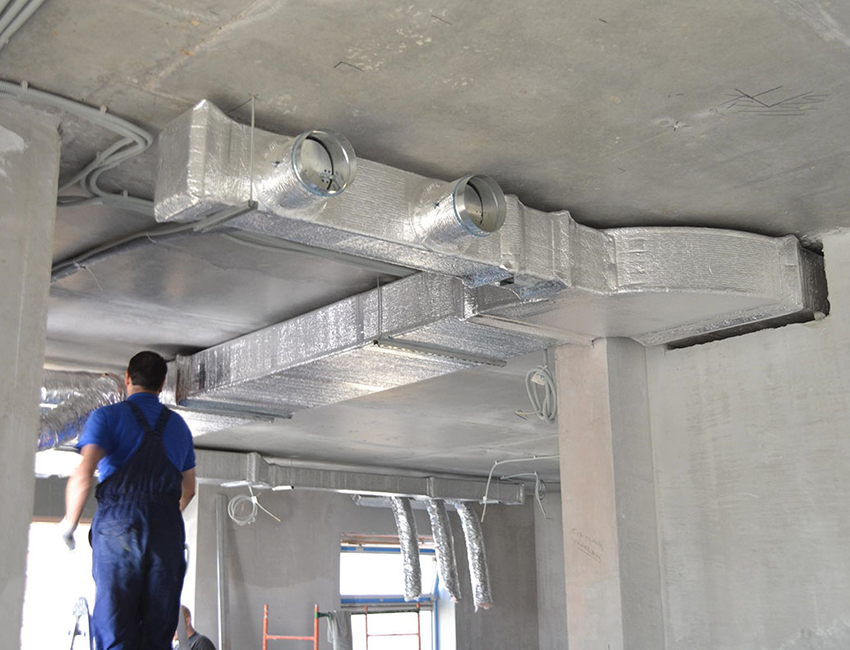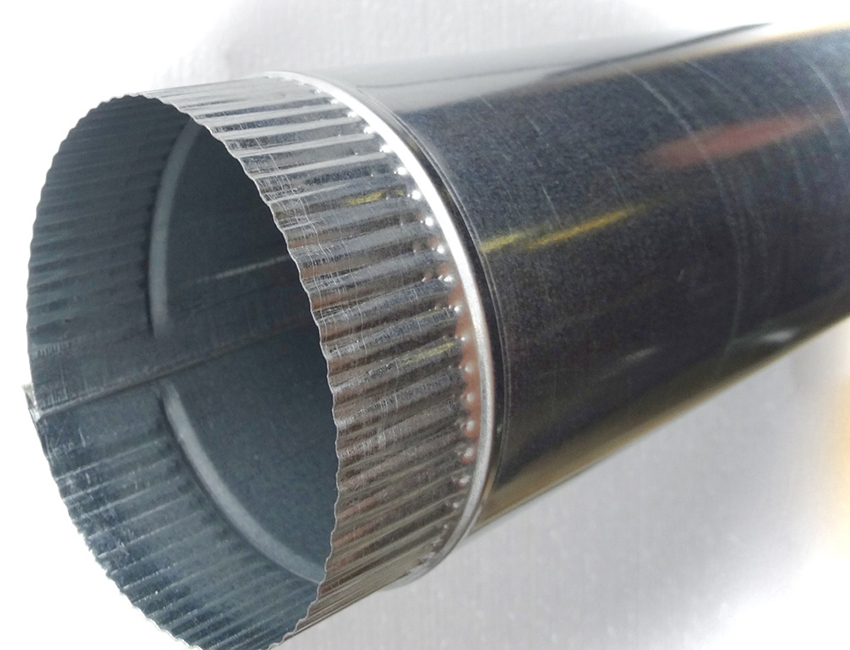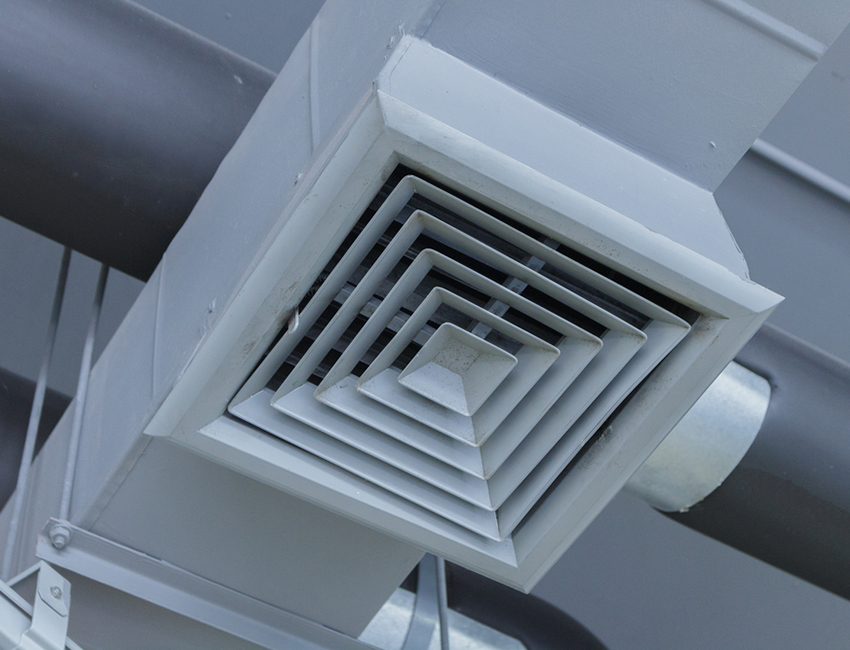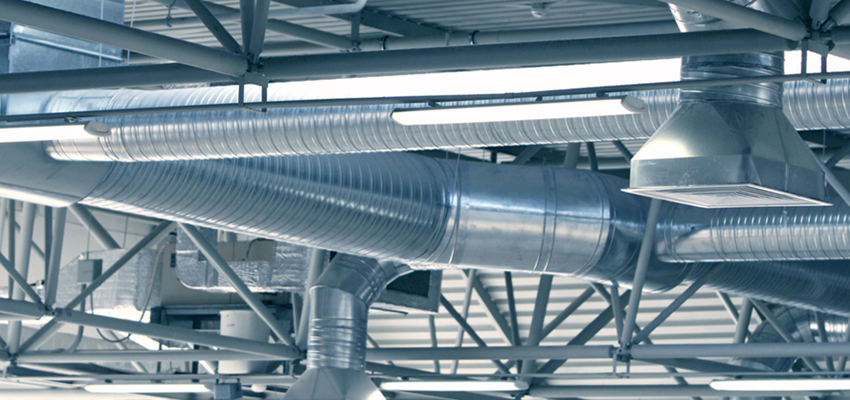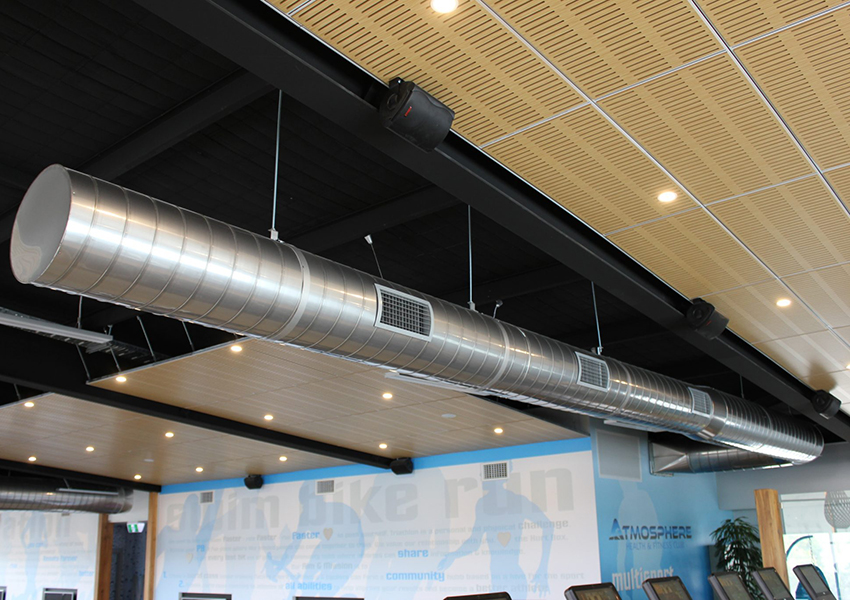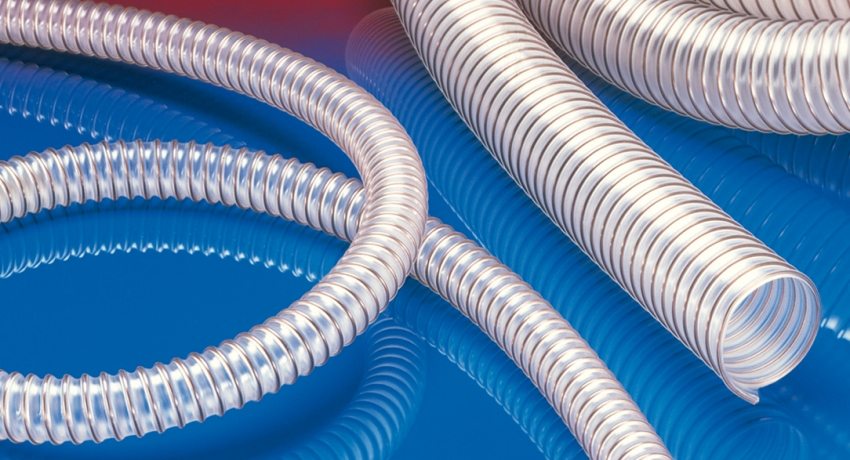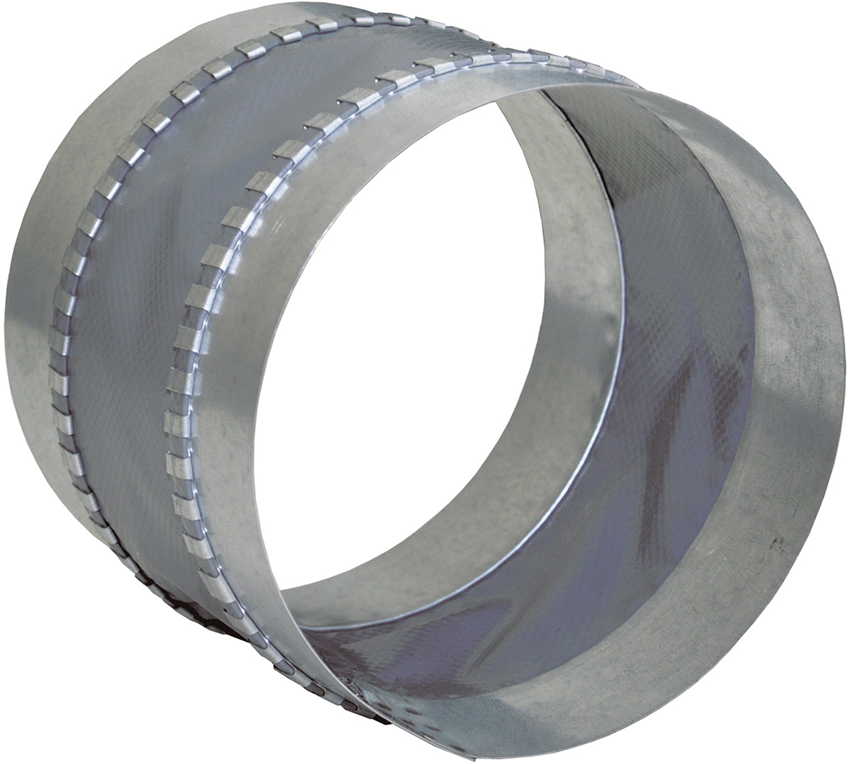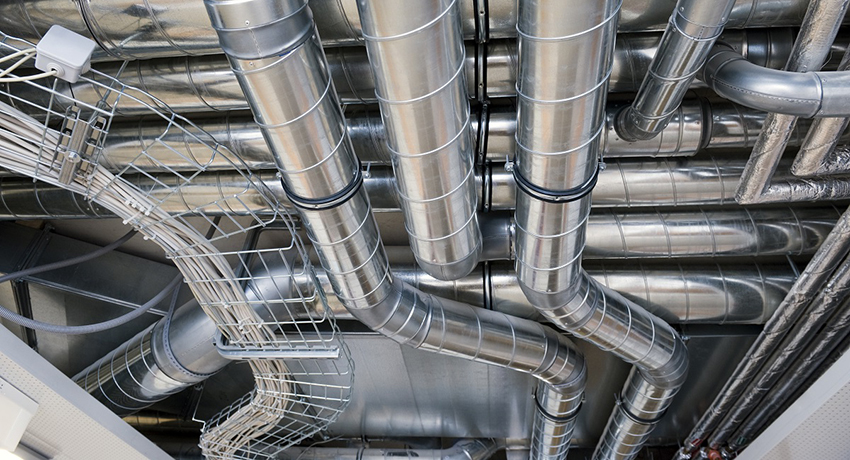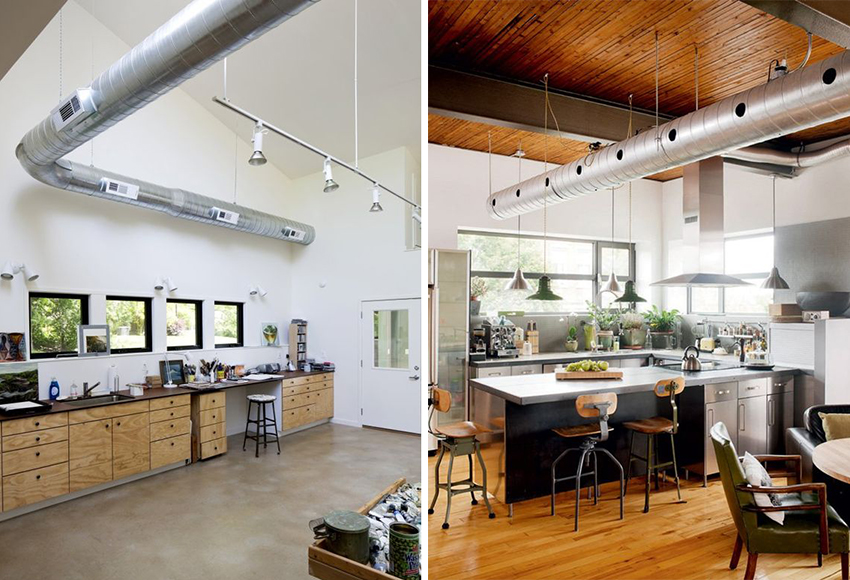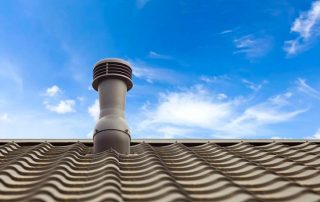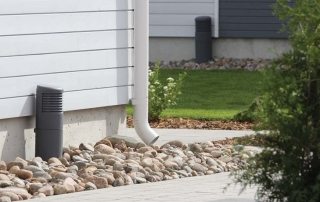Before installing ventilation lines, it is necessary to calculate the area of air ducts and fittings. The performance of the system depends on this event, so all calculations require a serious approach. Today, there are two main ways to calculate all the necessary values for the future air structure. They will be discussed in this article.
Content [Hide]
- 1 What is the calculation of the area of air ducts and fittings for?
- 2 Duct calculation methods: formulas and online calculators
- 3 Duct area calculation: calculator
- 4 Algorithm for calculating the air speed in the duct
- 5 Tips for calculating duct resistance
- 6 Determination of pressure losses after calculating the area of the ducts
- 7 How to Calculate Pipe Area: Fittings
What is the calculation of the area of air ducts and fittings for?
Ventilation communication is a complex structure that includes not only pipes, but also a large number of auxiliary connecting elements. Many consumers, before buying and installing communications, are interested in the question of how to find the area of the pipe.
Note! Carrying out the correct calculations allows you to determine the required amount of material for organizing an air distribution network. This allows you to save finances and mount the optimal system for a particular room, taking into account its features.
Consider what other parameters are affected by the area of the air ducts:
- the amount of transported air;
- speed of movement of air masses;
- tightness;
- noise level;
- electricity costs.
To determine the values required for the installation of ventilation, it is recommended to contact a specialist. They will help to draw up an optimal design of the air distribution network, however, this requires certain costs. If desired, material counting and other calculations can be done independently. There are several ways to do this.
Duct calculation methods: formulas and online calculators
The air distribution network affects the quality of the microclimate in the room. The main function of such a system is to remove stale air that negatively affects human health. Before proceeding with the installation of this communication, it is necessary to create its detailed project. So how do you calculate the area of a pipe?
The area calculation alone is usually not enough to design an optimal air distribution network.There are other important parameters that require attention, namely: the shape of the pipes, the number of fittings, the cross-sectional index, etc.
To draw up a project yourself, you must use one of two popular methods:
- using formulas;
- calculation on an online calculator.
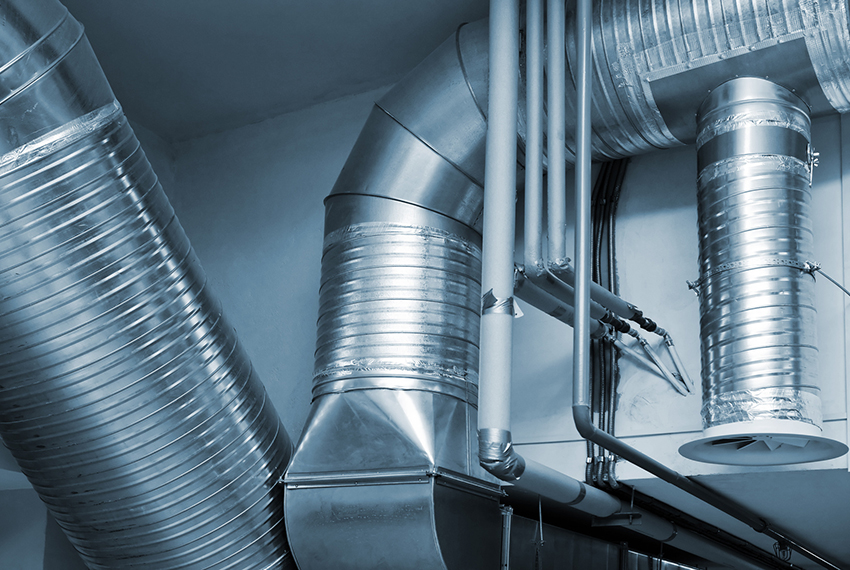
Before buying all parts of the ventilation, it is necessary to calculate the area according to the formulas, to save your money
The first method is more difficult, since not everyone will be able to use the formula correctly. The second popular option is to use an online calculator to calculate ventilation ducts. This method is simple, because to carry out the calculations, you just need to specify the parameters of a specific network, and the program will do everything for you.
Calculating the perimeter of a rectangle using formulas
Special formulas are used to determine the required values as accurately as possible. But this method is not suitable for everyone, as it is rather difficult and takes a lot of time. To calculate the cross-sectional area, you need to know two important numbers. The first of them must correspond to the minimum amount of transported air, and the second to its speed.
Helpful information! It is important to remember that cross-sectional area is a key parameter. It determines the speed with which air masses will move along the communication. In this case, the following pattern can be traced: the larger the cross-sectional dimensions, the lower the air speed in the network. To calculate the squaring of the duct, you can also use several methods at once, which makes it possible to compare the results.

Calculations for installing an air duct can be done both independently and using a special calculator
Air distribution structures with a large cross-sectional area also affect the overall noise level by reducing it. In this case, electrical costs are also reduced. However, installation of large-sized ventilation requires more material, time and effort.
When calculating the cross-section of the duct, the shape of the structure plays an important role. Depending on this indicator, rectangular and round products are distinguished. The first ones do not have such high throughput rates as the second ones, because they have more resistance to the air flow. However, in some situations, their use is more justified. For example, they fit well into the interior (they are mounted end-to-end to work surfaces, as well as pieces of furniture).
The formula for the cross-sectional area of a rectangular communication is calculated as follows:
S = L x 2.778 / Vwhere:
S - area (cm²);
L is the amount of consumed air (m³ / h);
V is the speed of movement of the air mass (m / s);
2.778 is the required coefficient.
And also, using the formula, you can determine the actual cross-sectional area of an air transport network of this type:
S = A x B / 100where:
S - indicator corresponding to the actual area;
A - height;
B - width.
On the Internet, you can find other formulas that allow you to calculate the area of a rectangle. In such calculations, experts recommend to be very careful and indicate all values in accordance with the requirements.
Calculating the area of a circle using formulas
Circular air transport lines are easy to install and high throughput. This shape of the pipes minimizes resistance to moving air flows. The choice of communication parameters is made depending on the individual preferences of consumers, the features of the layout of the premises and the system itself.
When calculating the air distribution network, one important rule must be taken into account.In order to save materials, the length of the lines should be as short as possible, but at the same time the system must cope with the tasks assigned to it. The area of the circular duct depends on the amount of transported air and its speed. The formula for calculating the area in this case looks the same way as for rectangular systems (S = L x 2.778 / V).
In turn, the actual area is determined as follows:
S = 3.14 x D² / 400where:
S - indicator corresponding to the actual area;
D - communication diameter;
3.14 is a mathematical constant (pi number).
Helpful information! There are special regulatory documents that allow you to compare the dimensions of pipe cross-sections with the required indicators. This makes it easy to determine the correct duct size. The most famous of these documents is building codes and regulations (SNiP).
When carrying out the last stages of calculating the area of a circle, it is recommended to take into account some conditions. For example, the section dimensions for each straight leg must be noted separately. It is imperative to use in the calculations the resistance exerted on the air flow. Experts also advise starting to draw up a project from the main (main) channel.
Often, the rate of movement of air masses exceeds the recommended parameters, which affects the noise figure during system operation. To cope with this problem, it is common to increase the diameter of the main duct flange element. You can also purchase special devices - silencers.
In case of problems with self-calculation, it is recommended to seek engineering assistance. It is best to entrust the calculation of the duct area to a competent organization.
Duct area calculation: calculator
The online calculator is a free application that can be easily found on the Internet using a browser search engine. There are some instructions to help you understand the nuances of using this program.
First of all, it is worth remembering that all the necessary geometric parameters must be indicated in millimeters. This allows for the most accurate calculation of the duct area. The online calculator is also used to determine the dimensions of connectors (e.g. adapters) and deflectors.
In some cases, the project is drawn up taking into account the number of seams. To do this, in a special box, which, as a rule, is located at the end of the list, you need to check the box and enter the corresponding number. You can use fractional values to calculate the parameters of the air transport network. Then do not forget about the point, which plays the role of a separator.
After filling in all the fields, it remains to click on the "Calculate" button. The program should instantly return a value corresponding to the specified parameters. Thus, using an online calculator is an easy and quick way to determine the quadrature of communication.
With the help of such simple programs, you can determine not only the parameters of the channel section, but also other indicators. The calculator allows you to find the speed of movement of air masses, resistance and pressure losses in the system, as well as calculate the thermal insulation of the duct.
Algorithm for calculating the air speed in the duct
You can calculate the air exchange rate using special tables or using formulas. It is important to know the fold factor in advance. It determines the amount of air required to provide normal ventilation of 1 m³ of the room in 1 hour.In this case, there are also special tables, but the values in them are often rounded. Therefore, experts recommend determining this figure independently using formulas.
Consider the formula by which the air ratio is calculated:
N = V / Wwhere:
N - multiplicity (number of times / h);
V is the amount of fresh air entering the room for 1 hour (m³ / h);
W - room volume (m³).
Related article:
Plastic ventilation: using plastic pipes for ventilation
DIY plastic ventilation, PVC, polyurethane, polypropylene, ventilation for plastic windows.
Helpful information! The optimum speed for most household systems is 3-4 m / s.
To carry out the aerodynamic calculation of the duct, several values are needed, such as the multiplicity factor, the volume of the room and the channel cross-sectional area. The formula in this case will be as follows:
V = L / 3600 x Swhere:
V is the speed of movement of air masses (m / s);
L is the amount of air used (m³ / h);
S is the cross-sectional area of the pipe (cm² or m²).
It should be said that the speed of air transportation depends on two more parameters: noise level and vibration coefficient. When calculating the speed in the duct, it is necessary to take into account these indicators and design the system in accordance with SNiP.
Tips for calculating duct resistance
The air that moves through the ventilation pipes feels resistance. This is especially true for rectangular communications. The fan installed in the system must generate a lot of pressure to maintain the normal air flow rate. When it falls in the line, the fan performance factor decreases. Thus, the calculation of the resistance index in the air duct is necessary for the selection of the ventilation device.
Accurate determination of resistance is a rather difficult task. This is due to the fact that it requires separate calculations for each element in the structure. In such cases, it is recommended to seek engineering assistance from specialists. The design department is able to quickly determine all the required values. This is due to the fact that the calculations are carried out not by people, but by a special software package.

The greater the resistance in the pipes, the lower the air speed and the higher the fan performance.
It takes too much time to independently determine the resistance of air transport communication. It requires the use of special graphs and tables. In addition, the human factor can affect the accuracy of the final results. Duct and fittings calculators are not recommended in this case, but their use is preferable to manual calculation.
Note! The standard resistance values in air distribution communications are 75-100 Pa for apartments, the area of which ranges from 50 to 150 m². This data takes into account the typical air speed (3-4 m / s).
The resistance coefficient does not depend on the number of rooms served by the ventilation network. It is influenced by the design features of communication. A particularly important parameter is the length of the system.
Determination of pressure losses after calculating the area of the ducts
After calculating the pipe area, air velocity and resistance in the engineering structure, it becomes possible to easily calculate the pressure loss. This indicator influences the choice of fan power. It is calculated in pascals (Pa). To calculate it, you can use the following formula:
P = R x L + Ei x V2 x Y / 2where:
R - specific pressure reduction due to friction arising in the process of interaction of air flows with the channel walls (Pa / m);
L is the length of the section of air transport communications (m);
V is the speed of movement of air masses in the place of the system for which the calculation is made (m / s);
Y - air density (kg / m³);
Ei is a numerical indicator of local pressure losses in the sum.
Frictional pressure loss (R) can be easily determined using relevant reference literature. The Ei coefficient is directly dependent on the characteristics of the area for which the calculation is made.
How to Calculate Pipe Area: Fittings
To determine the required values of the shaped elements of communication, it is preferable to use an online calculator. This method is the fastest and does not require any professional knowledge. The performance of the system as a whole depends on the number and geometric characteristics of auxiliary products. Performing manual counting for each of them is a very difficult task, which only a person with an engineering education can handle.
It is worth noting that even engineers use special tables and values when performing such calculations. To calculate the fittings of the air ducts, special programs are used with which the designers work.
Consider the most common fittings that are used in air transport communications:
- branch;
- diameter adapter;
- adapter for the form;
- tee (rectangular or round);
- bend in the form of the letter S (duck);
- umbrella.
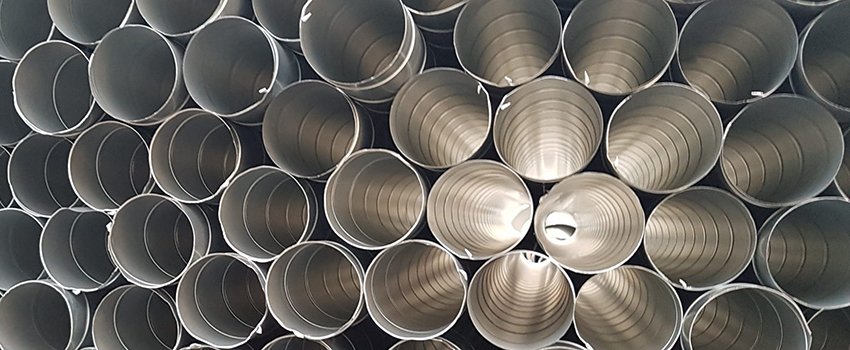
Even a person without engineering education can do all the necessary calculations using a calculator.
Each of the above elements plays a very important role in the system and requires a separate calculation. On the Internet, it is easy to find an online calculator that will help you calculate the fittings of the air distribution system. The main thing that is required of a person performing such calculations is attentiveness.
Calculation of air ducts and fittings includes several basic geometric and physical parameters. This operation must be performed without fail before installing the ventilation system. Having understood the formulas, you will be able to determine all the necessary values for future communication at no cost. Remember that specialists are able to cope with this task much faster, and in this case, the probability of making mistakes will be minimal.
